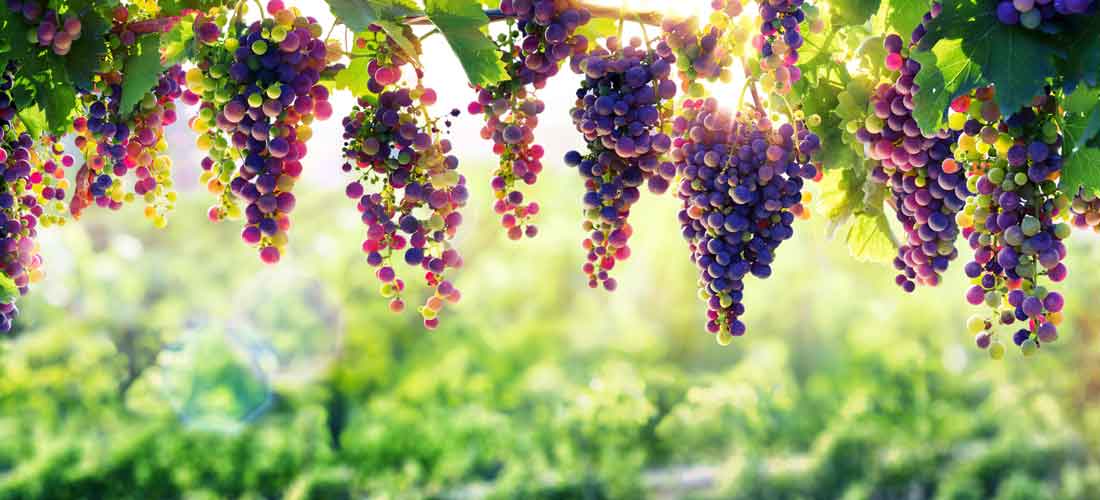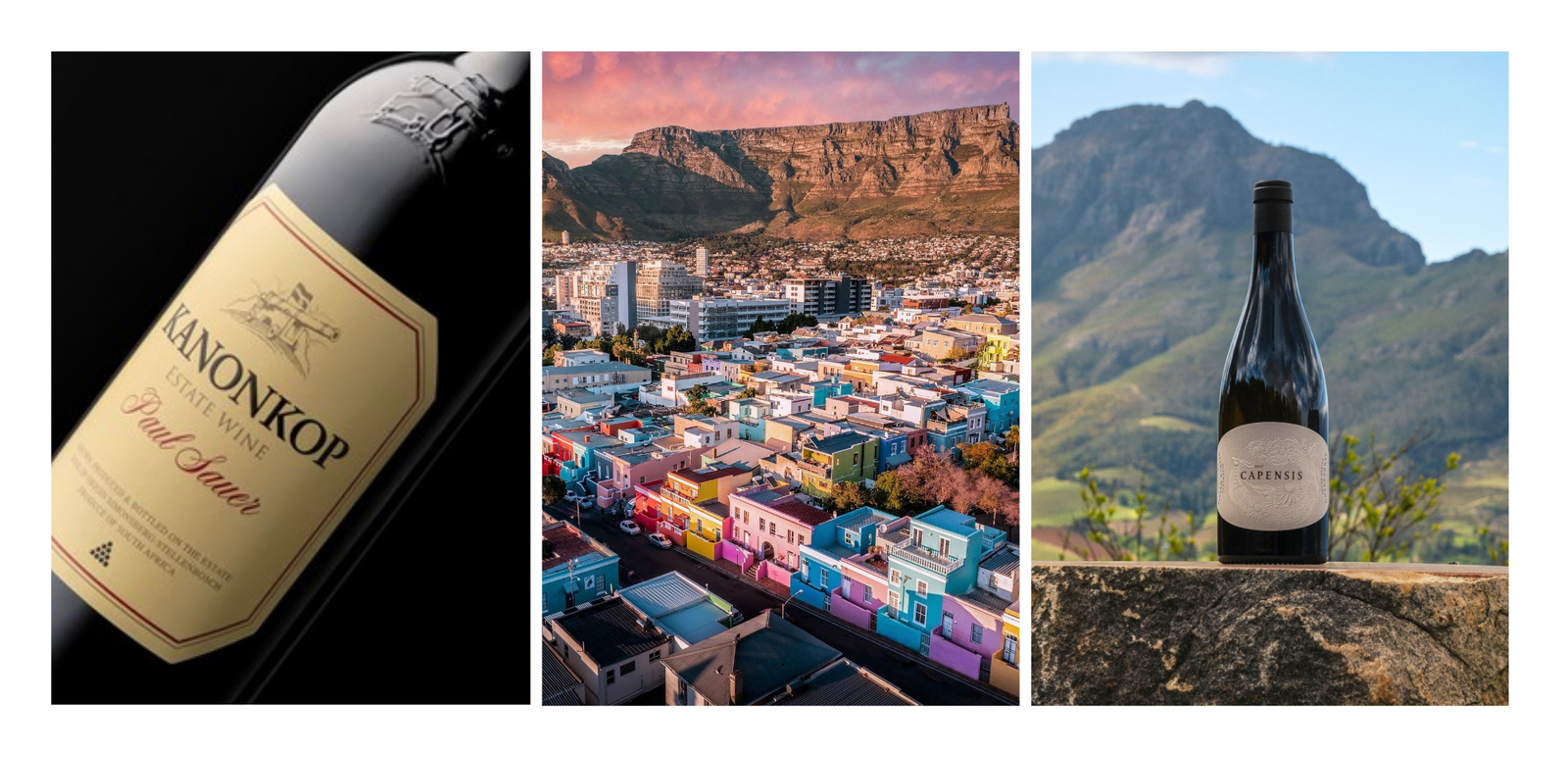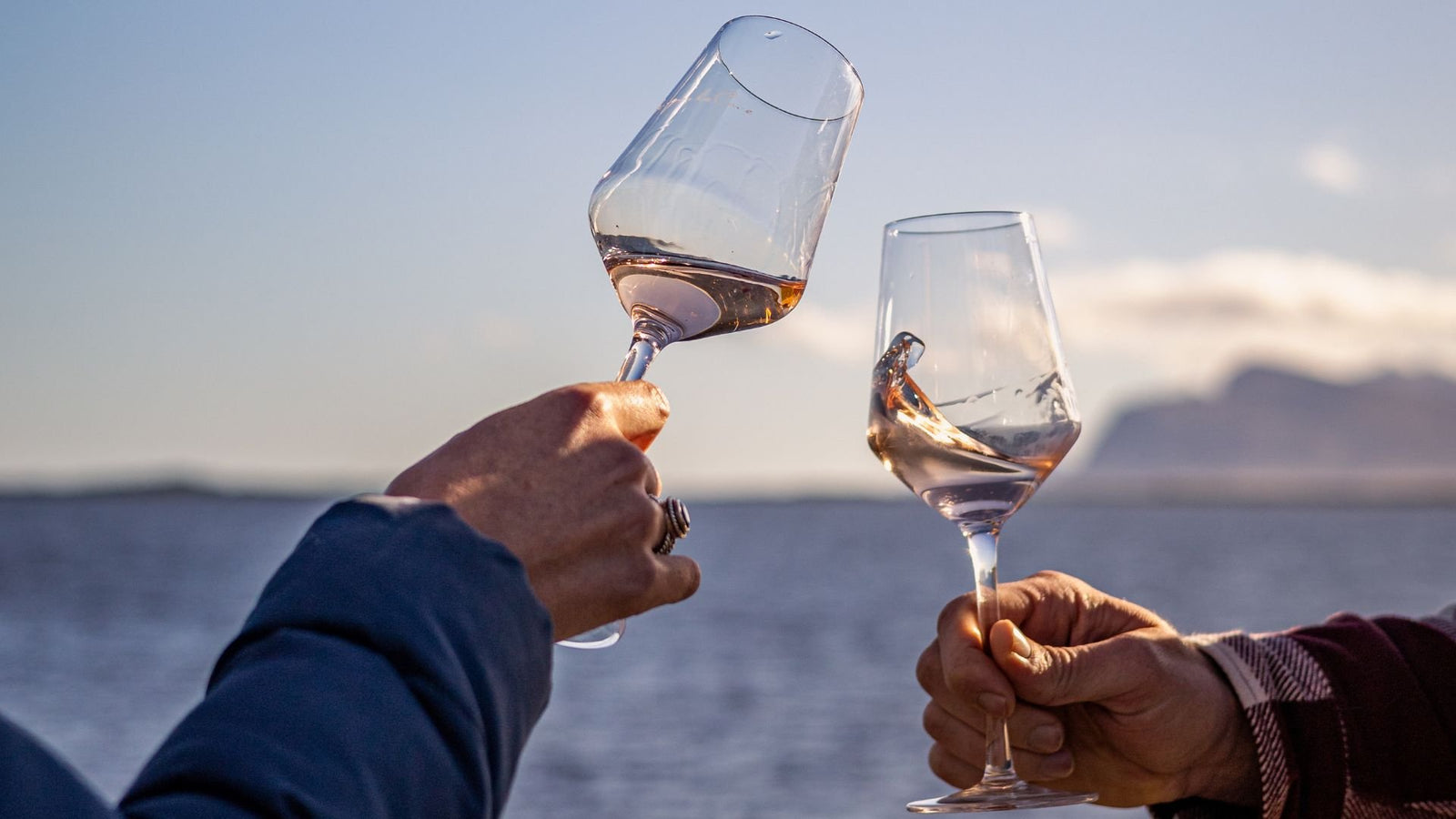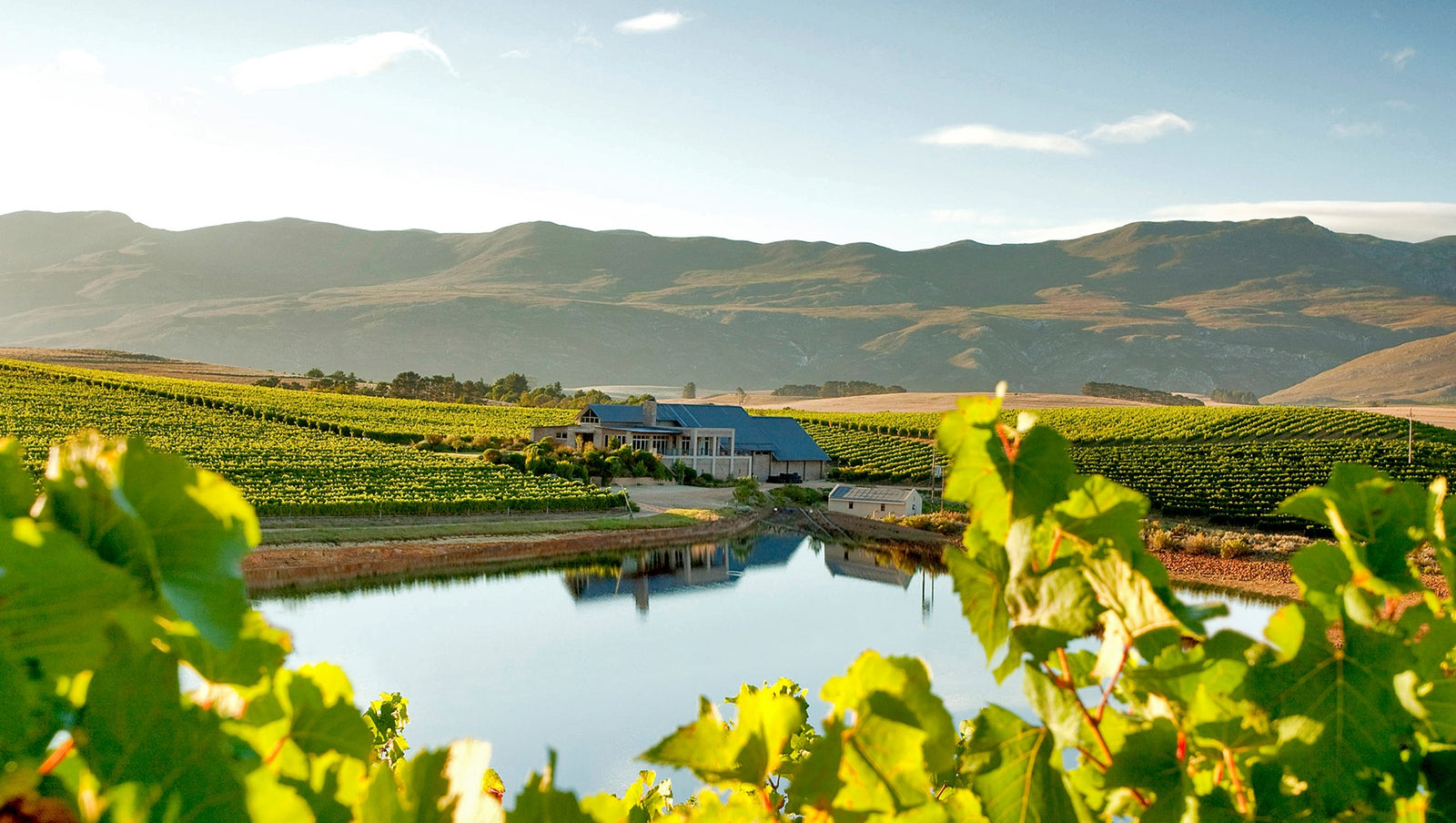Merlot is the most popular and widely planted wine grape varietal in France, reaching its true zenith of expression in Bordeaux wine. Around the world, it’s the fifth most planted wine grape.
Merlot is a variety of black wine grape that is originally from the Bordeaux region of France dating back all the way to the first century AD. The name is suggested to have been associated with the French word “merle,” which translates to blackbird where both blackbird and the Merlot grape share the similar black and blue colour.

Image credit –Alvi’s Drift
Back in the day, the inconsistent weather in France caused the harvest to be different each year. This led winemakers to blend grapes together to ensure the balance of the flavours in their wines each year. While Merlot is primarily used as a blending grape, there are still a few places in Bordeaux that only makes Merlot-based wines and are known to be some of the most famous and expensive wines in the world that can cost over $5000 a bottle.

Image credit –Winemag
According to studies conducted by the University of California in Davis, the Merlot grape is related to Cabernet Franc and Carmenere. Thanks to DNA, it is now thought that Merlot is a cross between Cabernet Franc and the obscure grape Magdeleine Noire des Charentes.
Merlot started earning a reputation for producing quality wine in 1784, due to the growing fame of the wines produced in the Right Bank of Bordeaux. While the Right Bank of Bordeaux discovered Merlot in 1784, it took several decades until the grape started to become widely accepted in the Medoc, even though it is only used as a blending variety in that region.
In 1990, Merlot was the seventh most popular grape being planted in the world and jumped right to second place by 2010 being almost close to Cabernet Sauvignon, the other main grape used in Bordeaux wine, as number one. Now, nearly two thirds of Merlot in the world is being planted in its native France. It is also grown in Italy, Romania, Argentina, South Africa, Switzerland, the United States and Australia to name a few.
When it comes to merlot, the differences between Old and New World examples are easily recognisable. Traditionally, Old World winemakers choose to pick their merlot grapes on the earlier side of harvest in an effort to keep alcohol content low (making the wine more medium-bodied) and to protect a little natural acidity.
New World producers, by comparison, tend to prefer picking later in the season, creating a fruity, full-bodied merlot that stands alone as a single-varietal wine.
The Right Bank of Bordeaux: The Paradise of Merlot
Merlot plays an important role in Bordeaux, it is one of the most planted wine grape in Bordeaux. Because of the different terroirs, the Bordeaux red wine blends usually contain higher proportion of Cabernet Sauvignon on the Left Bank, while Merlot dominates the Right Bank blend.
Right Bank wine regions include Saint-Émilion and Pomerol with famous wineries like Petrus and Ausone.
Merlot’s Role in Blends – The smooth, rounded and easy-drinking are the characteristics of Merlot, when blending with other grape varieties. Merlot adds softness and sweet fruit flavors to Bordeaux blends to offset the rough tannins and acidity of Cabernet Sauvignon – the second most planted variety in the area. Merlot’s verdant quality and tolerance of cool temperatures make it a favorite in Bordeaux, where other vines often prove less reliable. It’s rare to see a Bordeaux wine made exclusively from Merlot.
Besides soft and round in the mouth, Merlot wine contains blackberry, cherry, plum flavors. Also, after finishing in wine casks, Merlot will contain chocolate and vanilla flavors.

Image credit –Wine Folly
What does Merlot wine taste like? While it is a dry wine, Merlot is comparatively low in tannins. That creates a smoother, less bitter experience, and makes Merlot softer and easier to consume than many of its counterparts. The most notable flavor and aroma of Merlot wine is fruit. Often, Merlot carries raspberry notes, as well as black cherry, plum, blueberries and even jam. These notes give many Merlots an aroma similar to fruitcake. Other common notes of Merlot include graphite, cedar, tobacco, vanilla, cloves and chocolate.
However, depending on the climate where the grapes grow, Merlot wines can have a diverse array of flavors. Merlot grapes fall into two different growing climates — cool and hot. In the world of wine, these terms are more subjective. Old World producers consider 60 degrees Fahrenheit (16 Celsius) to be “warm,” but the same temperature is “cool” for many New World vineyards. Below are some general differences between Merlot grown in cool and warm climates.
- Cool-Climate Merlot
Cool-climate varieties are the classic Merlot. From the hills of France, Italy and Chile, these strains feature heavy, earthy flavors like tobacco and tar. Because of their higher concentration of tannins, it’s easy to confuse these Merlots with cabernet sauvignon, their regional counterpart.
Cool-climate Merlots contribute to the famed Right Bank Bordeaux blends, along with vintage strains such as St. Emilion, Pomerol and Fronsac.
- Warm-Climate Merlot
Warm-climate Merlots heavily feature fruit notes and a lighter body. Grown in the sun-filled valleys of California, Australia and Argentina, these wines have a lower tannin presence and a softer finish. Classic warm-climate Merlots come from California’s Paso Robles and Napa Valley.
For warm-climate Merlots, vintners sometimes prefer an oak-aging process of up to 24 months, which gives the delicate wine more structure.
Types of Merlot Around the Globe
Bordeaux
The birthplace of the grape, Bordeaux, France, is home of the most iconic Merlots. Merlot remains the most commonly planted grape along the river, especially on the Right Bank. Bordeaux Merlots have prominent earth and mineral tones, depending on the soil they grow in.
Tuscany
Under the warm sun of central Italy, Merlot grapes from Tuscany tend to be slightly larger, which some vintners say lessens harsh tannins. Tuscany Merlots are famous and expensive, and can feature the Merlot grape on its own or blended with Bordeaux or local varieties.
California
Merlot grapes are the second-most popular grape in this sunny state known for its vineyards. California Merlots range from sweet grocery store varieties to high-end, nuanced masterpieces.
Chile
Historically, Chilean reds have been Cabernet Sauvignon or Carménère-based wines, but Merlot is quickly gaining ground in this coastal South American country. For a few decades during the late 20th century, Chilean vineyards sold and marketed wine with incorrectly identified Carménère grapes as Merlot.
Australia
The first Merlot-growing vineyards in Australia didn’t register until the 1980s, so the country is still a new producer. However, the production of Merlot has expanded enormously in the past 30 years, and Australian vineyards are now impossible to ignore. Australian producers are still determining the best regions for growing Merlot grapes, but dependable regions include McLaren Vale, Barossa Valley, Coonawarra and along the Margaret River. It’s easy to identify Australian variants by their powerful fruit overtones and woody flavors.
South Africa
In 1979 there was one hectare of Merlot planted in South Africa, and Overgaauw, in Stellenbosch, was the first to release a wine made only from Merlot with their 1982 groundbreaker that was released a few years later. The Merlot grapes grown on the farm were previously used for their well-known Bordeaux blend Tria Corda. The development and progress of Merlot is therefore significant in South Africa since the first release in the ‘80s. Coverage in the South African Wine Magazine reflects opinions and controversial issues of Merlot, such as the perception of what a typical wine made from this variety should be, and the ever-varying results of the tasting panel in searching for a really excellent South African Merlot.

Image credit – Mark Lund




